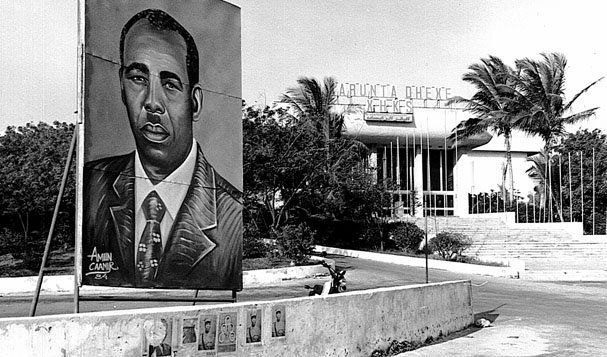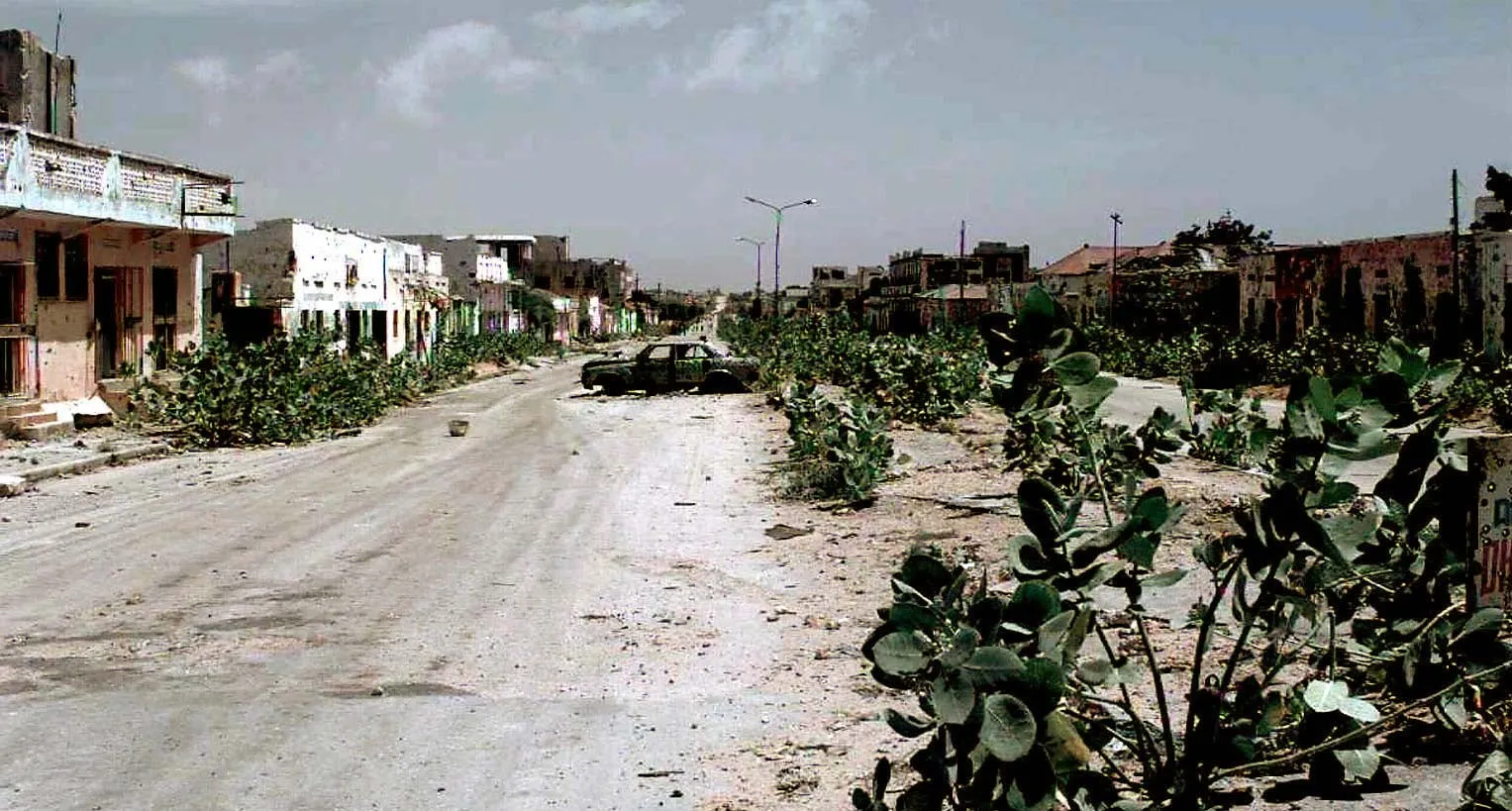The Somali Civil War (1991-present) is one of those conflicts that seems to defy resolution. It’s a tangled web of clan rivalries, political intrigue, and a desperate struggle for power that’s left the country in a perpetual state of chaos. Sit back and enjoy the history, the major players, and the ongoing impact of this seemingly never-ending war.
The Somali Civil War (1991-present) is a saga of unrelenting conflict that has ravaged Somalia for over three decades. This article will walk you through the historical roots, the key players, the international response, and the humanitarian toll of this enduring war.
Historical Background
Before we dive into the heart of the conflict, let’s take a quick look back at the history that set the stage for the Somali Civil War (1991-present).
Pre-Colonial and Colonial Era
Somalia’s history is rich and complex, with ancient trade routes connecting Africa to the Middle East and beyond. However, the arrival of European colonial powers in the late 19th century disrupted traditional clan structures. Somalia was divided into British Somaliland, Italian Somaliland, and French Somaliland (now Djibouti).
Independence and Early Turmoil
Somalia gained independence in 1960, merging British and Italian territories into the Somali Republic. The excitement of independence quickly faded as political instability took root. Clans vied for power, and the government struggled to maintain control. In 1969, Major General Mohamed Siad Barre seized power in a coup, promising a socialist state and unity.
The Outbreak of the Civil War
The Somali Civil War (1991-present) began against a backdrop of Siad Barre’s increasingly authoritarian regime. By the late 1980s, widespread dissatisfaction and brutal repression had sown the seeds of rebellion.

Former President of Somalia
Source/Public Domain
Collapse of Siad Barre’s Regime
In 1991, Barre was ousted by a coalition of clan-based militias. His departure left a power vacuum that various factions scrambled to fill. Without a central authority, the country descended into chaos, and the civil war officially erupted.
Initial Phases of the Conflict
The early 1990s were marked by intense fighting among rival factions. Mogadishu, the capital, became a battleground as warlords fought for control. The humanitarian crisis was staggering, with thousands killed and millions displaced.
Major Factions and Players
Understanding the Somali Civil War (1991-present) means knowing the key players involved.
Warlords and Militias
The immediate post-Barre era saw the rise of powerful warlords like Mohamed Farrah Aidid and Ali Mahdi Mohamed. These leaders commanded loyalty through clan affiliations and controlled significant territories.
Islamic Courts Union (ICU)
In the early 2000s, the ICU emerged, gaining popularity for restoring a degree of order in areas under its control. However, their strict interpretation of Islamic law and growing influence alarmed both local and international actors.
Al-Shabaab
After the ICU’s defeat in 2006 by Ethiopian forces (backed by the US), its militant wing, Al-Shabaab, became a dominant force. Al-Shabaab has carried out numerous attacks within Somalia and across the border, aiming to establish an Islamic state.
Federal Government of Somalia (FGS)
The internationally recognized Federal Government of Somalia (FGS) was established in 2012. Despite support from the African Union and Western nations, the FGS struggles to assert its authority beyond Mogadishu.
International Involvement
The Somali Civil War (1991-present) has drawn international attention and intervention.
United Nations
The UN initially intervened in 1992 with humanitarian missions (UNOSOM I and II) but faced significant challenges due to the volatile environment. The infamous “Black Hawk Down” incident in 1993 highlighted the dangers of intervention.
African Union
The African Union Mission in Somalia (AMISOM) has been instrumental in supporting the FGS and combating Al-Shabaab. Composed of troops from various African nations, AMISOM has been crucial in maintaining relative stability in some areas.
United States and Western Nations
The US and other Western countries have provided military and humanitarian aid to Somalia. Drone strikes and special operations have targeted Al-Shabaab leaders, aiming to curb their influence and capabilities.
Humanitarian Impact
The human toll of the Somali Civil War (1991-present) is devastating.
Displacement
Millions of Somalis have been displaced, both internally and as refugees in
neighboring countries. The displacement crisis has strained resources and created long-term challenges for host countries and humanitarian organizations.
Famine and Food Insecurity
Recurring droughts, compounded by the conflict, have led to severe food shortages. The 2011 famine claimed over a quarter of a million lives, and food insecurity remains a persistent threat.
Healthcare and Education
The war has crippled Somalia’s healthcare and education systems. Hospitals and schools are often targets in the fighting, leaving many without access to basic services. Diseases that are preventable elsewhere can become deadly in such an environment.
Impact on Women and Children
Women and children are particularly vulnerable. Gender-based violence has surged, and many children have been recruited as soldiers by various factions. Efforts to protect these groups face numerous obstacles due to the ongoing violence.
Current Situation
Where does Somalia stand today in this prolonged conflict?
Governance and Security
The Federal Government of Somalia (FGS) controls parts of the country, particularly Mogadishu, with the support of AMISOM. However, large swathes of the country are still under the influence of Al-Shabaab or local clan militias. Security remains precarious, with frequent attacks disrupting daily life.
Economic Challenges
Somalia’s economy has been battered by the war, with infrastructure in ruins and development efforts constantly set back by violence. Despite these challenges, there are glimmers of hope. The Somali diaspora has been a lifeline, sending remittances that help sustain families and small businesses.
Efforts Toward Peace
Peace efforts have seen mixed results. Various peace conferences and agreements have come and gone, often falling apart as new conflicts arise. However, there are ongoing dialogues and initiatives aimed at building a more stable and inclusive governance framework.
Notable Locations
Let’s take a tour of some key locations that have been central to the Somali Civil War (1991-present).
Mogadishu
The capital city, Mogadishu, has been the epicenter of much of the conflict. Once a beautiful coastal city, it’s now synonymous with war and devastation. Efforts to rebuild are underway, but the city remains fraught with danger.
Kismayo
Kismayo, a strategic port city, has changed hands multiple times throughout the war. It is currently under the control of the Jubaland state, backed by AMISOM forces. Its port is crucial for the local economy, and control of the city is a significant strategic prize.
Baidoa
Baidoa, another key city, has seen heavy fighting and humanitarian crises. It serves as the interim seat of the South West State of Somalia. The city’s stability is crucial for controlling the surrounding region.
Hargeisa
Hargeisa is the capital of the self-declared Republic of Somaliland in the north. Somaliland has enjoyed relative peace and stability compared to the rest of Somalia and has its own government and military, although it is not internationally recognized.
Puntland
The autonomous region of Puntland, in northeastern Somalia, also plays a significant role. While it has declared autonomy, it recognizes the FGS. Puntland faces its own challenges, including occasional conflicts with Somaliland over disputed territories.
Conclusion
The Somali Civil War (1991-present) is a complex and deeply tragic conflict with no easy solutions. It’s a story of a country struggling to find its identity and stability amidst a backdrop of violence and hardship. While there have been small victories and moments of hope, the path to lasting peace remains elusive. Understanding the war’s history, the key players, and the humanitarian impact is crucial for anyone seeking to grasp the realities of Somalia today.
Frequently Asked Questions (FAQ)
Q: What started the Somali Civil War?
A: The Somali Civil War began in 1991 after the ousting of President Siad Barre. The power vacuum led to intense fighting among various clan-based factions.
Q: Who are the main players in the Somali Civil War?
A: Major players have included warlords like Mohamed Farrah Aidid, the Islamic Courts Union (ICU), Al-Shabaab, and the Federal Government of Somalia (FGS), supported by AMISOM.
Q: What has been the international response to the Somali Civil War?
A: The international community has intervened through the UN, the African Union, and various Western nations, primarily through humanitarian aid and military support aimed at stabilizing the region and combating terrorism.
Q: How has the Somali Civil War affected civilians?
A: The war has caused massive displacement, severe food insecurity, and the collapse of healthcare and education systems, with women and children being particularly affected.
Q: Is there any hope for peace in Somalia?
A: While the situation remains dire, ongoing peace efforts, dialogues, and the resilience of the Somali people and diaspora provide some hope for a more stable future.

